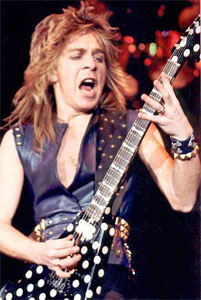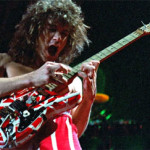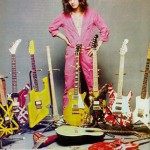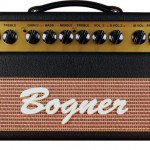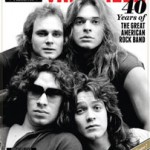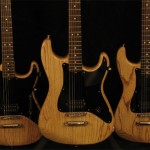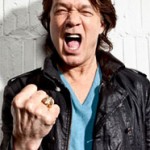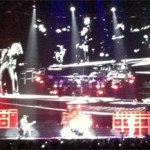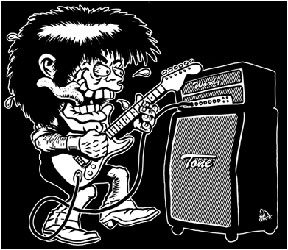A Few Belated Rhoads Insights, Pt 1
I’m a huge Randy Rhoads fan. Grew up listening to him, played his tunes in bands, saw him live with Ozzy on the Blizzard tour, still remember the TV news report about him dying.
So thought I’d read everything there was to read about him, and may have, but for some reason a couple things I missed or didn’t resonate with me as they did when I recently read a transcript of an interview by former Guitar Player mag writer Jas Obrecht.
Jas actually interviewed Max Norman, the producer of Blizzard of Ozz and Diary of a Madman, and the guy in the best position to actually know or remember what gear Randy used on those albums.
His gear at this point isn’t exactly a secret, but here are some tidbits that escaped me – from the Jas interview and this one from a 2009 Guitar World:
The Flange Effect
I first heard Blizzard’s subtle flange effect on “Crazy Train,” the verse. I wasn’t an effects expert at that time (teens) and didn’t know what I was hearing. I just knew that I couldn’t replicate that sound – the MXR Distortion+ I bought sure didn’t do it (lol) – nor could I exactly discern or reproduce the chords Randy was playing (more on that below).
When I got a little older and smarter about gear, I figured it was either some amalgam of noises from his pedalboard, or a result of layering so many guitars, or some studio thingy. Turns out it was the latter. From the Jas interview:
Max: On that album [Blizzard, but also used on Diary], the thing I used a great deal was an AMS 1580, which is a very clean British digital delay with a VCO [voltage-controlled oscillator] on it, so you can slightly flange and stuff like that. I used that for a lot of things. It’s got a real good sound.
Jas: Can you think of any cuts where the AMS 1580 stands out?
Max: If you listen to those rhythms on “Crazy Train,†you’ll hear there’s a real grind to them. That particular sound comes from the AMS. It’s almost like a flange, but not quite. It does these strange grindy things if you get it at the right setting. Plus, you can get this kind of hollow, tubey effect too – that’s the same kind of deal.
He also says that the AMS was used on “Suicide Solution” – “probably a bit of AMS, just to brighten the whole thing” [four rhythm tracks!] – and for the solo in “Flying High Again.” So at this point it’s probably safe to conclude that that effect is all over both albums, and is one ingredient to Randy’s studio tone.
Tripling, Not Doubling
Eventually I realized (and read about) the fact that Randy’s guitars were doubled. Well, yes and no.
In fact, according to Max, they were doubled, tripled and quadrupled, with the solos usually tripled:
A lot of those tracks – especially the lead guitar tracks – are triple-tracked, in fact. So he would play them three times. He would play the whole solo three times.
Wow! How you do that and not sound like crap is amazing, another testament to Randy’s awesome ability. Here are some Max quotes from the Jas interview:
> A lot of the reason for Randy’s particular guitar sound is the fact that he triple-tracked a lot of it, and that just made it huge. So I believe “Little Dolls†may have been one of the ones where we didn’t do that, and it may have suffered somewhat.
> Crazy Train solo – This is one of them that was triple tracked. If you listen to that track real close, you’ll hear there’s one main guitar around the center, as I remember, and there are two other guitars playing exactly the same thing, panned to the left and right, but back somewhat. And actually what happens is you don’t hear them – you just hear it as one guitar. He was the best guy at overdubbing solos and tracking them that I’ve ever seen. I mean, he used to blow me away. So on a lot of those things, when you hear a guitar that really comes out, that’s because there are three of them there. And it’s not like an ADT – he’s actually playing them three times, which means you get a very stable image. It really does sit there, rather than shift left or right, depending on where the delay is. That’s really the reason for that. Plus it’s a Charvel – they have an extraordinary top end.
> “I Don’t Know” solo – That was all doubled, that guitar. I think most of that was pretty much one take. We patched it up a little, and he went back and redid it once he had it down. See, the thing is, he would rip one down, and there would be a couple of little mistakes there. So instead of going back and patching those, he would go back and do the whole thing again once he knew what he was doing. He was extraordinary. He would know exactly what he played. I was really blown away by a lot of the stuff that he did. He’d play something, and I’d say, “Well, you want to try again?,†not really meaning it, and he’d go, “Yeah, I’ll do again.†And he’d play the same thing, but a little bit better! He was a very astute player like that.
> “You Can’t Kill Rock and Roll” – On that sort of slow-tempo thing, there’d be quite a few rhythm tracks there, apart from playing parts. There’d be a couple of power chord tracks, maybe one steel-string acoustic, and probably two or three other guitars playing parts.
Also mentioned in the interview:
> The “Flying High Again” solo was triple-tracked.
> “Steal Away the Night†– Rhythm and solo were double-tracked.
> “Dee” and “Diary of a Madman” acoustics were double-tracked, one with a steel-string acoustic and the other a nylon-string.
– End of part 1 of 2 –
Category: Randy Rhoads

